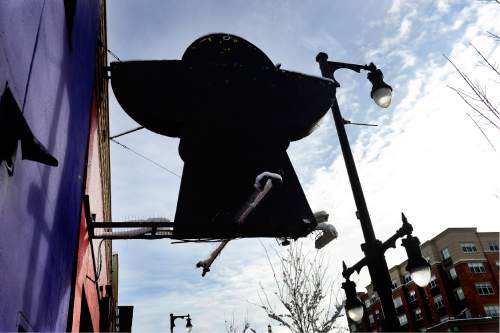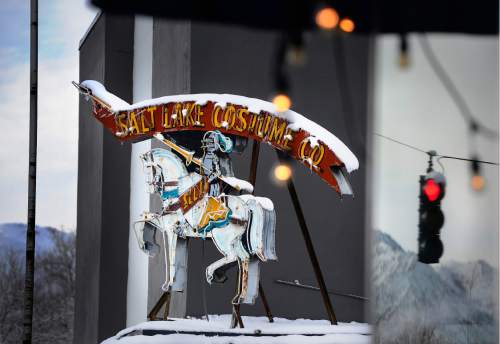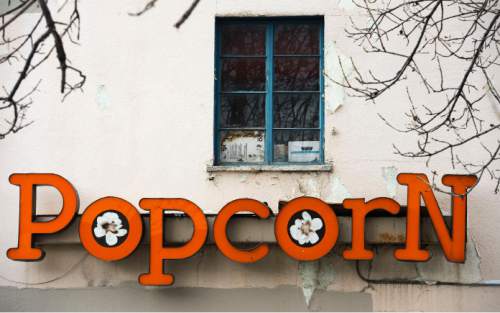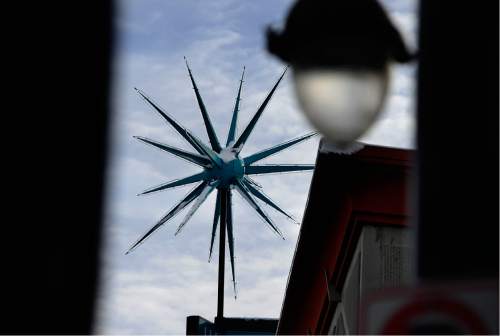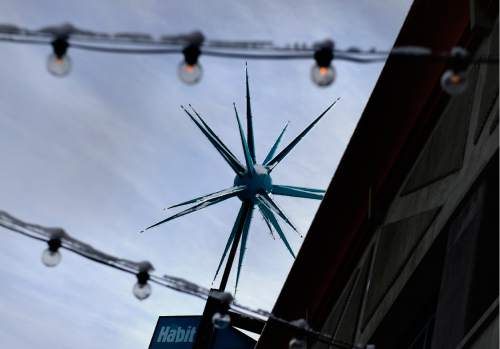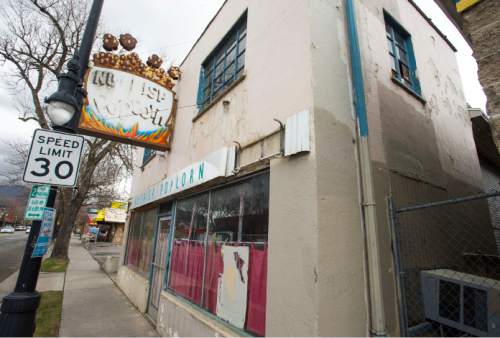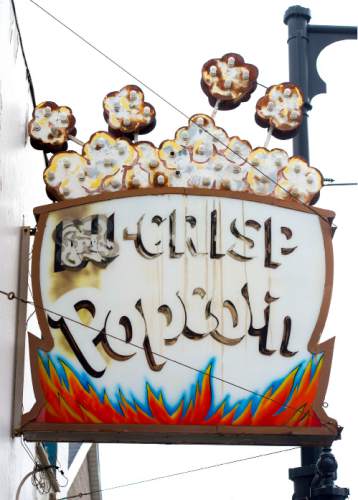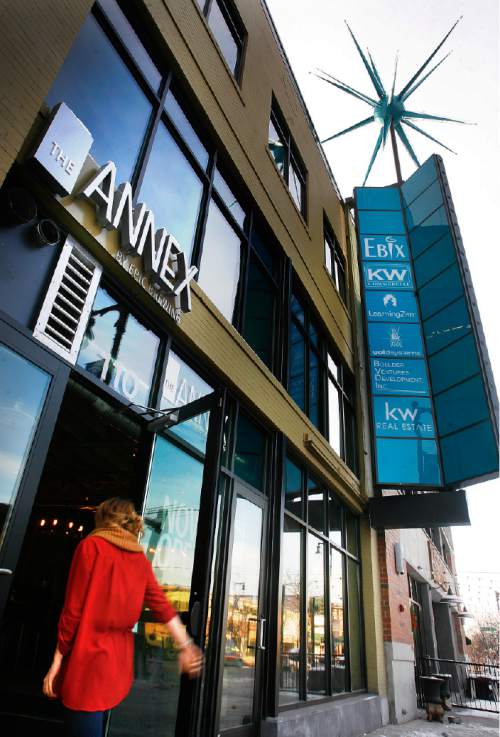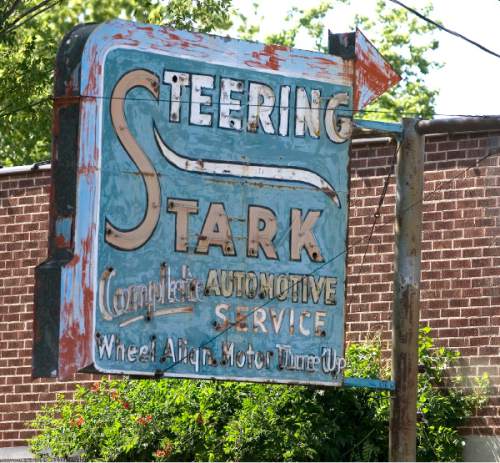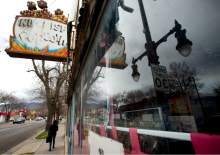This is an archived article that was published on sltrib.com in 2016, and information in the article may be outdated. It is provided only for personal research purposes and may not be reprinted.
Editor's note • In this regular series, The Tribune explores the once-favorite places of Utahns, from restaurants to recreation to retail.
It's a big black sign, jutting from the side of a building in a shape that lends itself to Rorschach-esque interpretations. Is it a double-spouted coffee pot? An angel spreading its wings? A postmodern drinking stein? A UFO beaming up its next human test subject?
If you've been around the Sugar House neighborhood awhile, you may know that this sign once marked the spot of a string of Mexican restaurants — Tampico, Don Antonio's, Richard's Casa Blanca and possibly another name or three. The sign's odd extensions and bulge at its top once formed a sombrero, and the location is now home to the Karamba nightclub.
But the sign says nothing about Karamba. Painted black on both sides, the sign's lettering and neon tubing were stripped off years ago because they threatened to fall onto anyone walking below. Yet its long history helped it earn a spot on the Sugar House Community Council's list of signs worth preserving.
Because of the sign's severe alterations over the decades, it's a low priority. Other deteriorating signs rank higher and are in more immediate need of rescue — classic neon signs like Nu-Crisp Popcorn, the Salt Lake Costume Company and Stark Steering.
The sign preservation effort aims to maintain some of the flavor of the Sugar House neighborhood, which in recent years has often seemed to be in a perpetual state of redevelopment. The council's biggest success so far has been helping to refurbish the spinning Granite Furniture sign, famed for its spiky "Sputnik" on top, common with midcentury modern architecture.
Council Chairwoman Amy Barry has fond memories of another iconic sign, the red "Redman" that once loomed atop the Redman Van and Storage building. It was supposed to have been preserved during the building's remodel. Except it wasn't.
"The original proposal had the owners saving the sign, but another owner decided they didn't want to keep it," Barry says. "No one knows what happened to it, so it's assumed lost, which is sad. You knew it was special and that it had been there forever. For a lot of people, seeing the Redman sign meant you were home."
Barry became a one-person preservation squad when a Maytag repair shop near the Sugar House monument was shuttered. She snagged the Maytag sign and keeps it in her garage.
That sense of preserving vanishing pieces of history also is strong in Laurie Bray, a professional photographer and Sugar House Community Council member. When she moved her studio to the neighborhood and saw the redevelopment projects, she decided to take out her camera. She now sells her stylized prints of some of her neighborhood's more iconic signs.
"When I saw the corner of the Granite Furniture block being torn down, I thought, what could be the next to go?" Bray says. "The signs themselves are works of art. Lots of people would talk to me about Snelgrove and Nu-Crisp Popcorn, and the Granite Furniture sign with the Sputnik on top was a legend. I realized I had a valuable commodity and people who really liked these signs started buying from me."
Bray captured the curvy Snelgrove sign before it was taken down last summer, after new owner Nestle switched the facility to a Dreyer's ice cream distribution center. While Nestle restored and repainted the famous Snelgrove double cone, they had no use for the actual Snelgrove name, so they kept it in storage. In January, it was relocated to the old Deseret Industries building on Highland Drive, where it sits until a new home is found.
"It will have to be repaired," says Bray. "Ideally, it would be a dream to get a benefactor who would save and preserve these signs in a museum or someplace."
The knight on horseback perched atop the building that once housed the Salt Lake Costume Company is one of the council's more urgently needed preservation projects, due to its advanced stage of deterioration. A potential change of the building's ownership, plus the fact that the sign is outside the Sugar House Redevelopment Zone (which means it doesn't qualify for a matching grant from Salt Lake City for businesses that promise to fix up their historic signs) could mean that the only way to save the sign is through crowdfunding.
"Public funding would be wonderful," says longtime Sugar House resident Lynne Olson. "I've talked to several people who are thinking about going through Kickstarter to raise funds to save the costume shop sign."
Olson also has been heavily involved with sign preservation, and she says that the signs are essential to stopping Sugar House from being filled with "boring, cookie-cutter architecture that makes the neighborhood look like 'Anywhere, USA.' "
"The most important thing is to get the city to change their ordinance to allow the preservation of these older signs that have artistic or historic value," Olson says. "Right now, there are modern restrictions we have to deal with, such as 'All signs must conform to modern regulations and laws,' so if a sign is broken, it stays broken and can't be restored or fixed up."
The city is working on a preliminary version of a revamped ordinance, says Anthony Riederer of the Salt Lake City planning division.
"We're gathering information on how best to identify historic and neon signs," says Riederer. "But this can't just be about Sugar House; this has to translate into something that's citywide, which is a work in progress and can be complicated."
Many of the city's iconic signs were built by the Rainbow Sign Co., and owner Vince Coley will soon begin work on restoring the Stark Steering sign.
"When you look back at some of the signs that were around 60 or 70 years ago, they were more lively and detailed and much more labor-intensive to make," Coley says. "But they're absolutely works of art that need to be preserved."
On the roof of his shop, Coley is storing the neon sign that once adorned the front of the Smith-Crown vacuum repair business. "It's still in pretty good shape," he says.
"There's something magical about Sugar House and people's memories of it," says Barry. "These signs bring up something wonderful in people; they make their memories meaningful and they want to preserve them."
Olson remembers what happened last summer, when the owner of the Nu-Crisp Popcorn shop let some preservation activists from the council into the building to get a closer look at the sign.
"She flipped a switch, and the sign turned on for the first time in maybe two decades," Olson recalls. "The neon kernels were popping on it and everything. Then people started sticking their heads in the door and were asking if it was opening again, telling us they remembered going there to buy popcorn when they were kids. And then a UTA bus driver stopped his bus, opened his door, and leaned out and said, 'Are you opening again? This is my favorite place in Sugar House!' "
If you have a spot you'd like us to explore, email whateverhappenedto@sltrib.com with your ideas.


